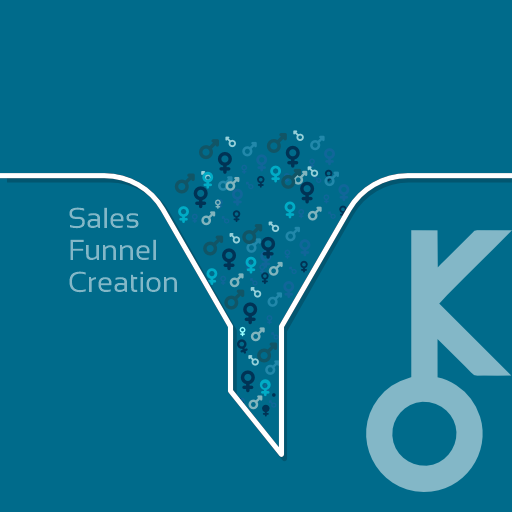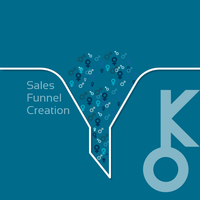Measuring Sales Funnel Performance: Analytics and Reporting

Measuring sales funnel performance analytics and reporting is a crucial aspect of any sales and marketing strategy. It involves the systematic tracking, analysis, and evaluation of key metrics at each stage of the sales funnel to understand its effectiveness in driving conversions and revenue generation. By capturing and analyzing data related to customer interactions, engagement, conversion rates, and other relevant metrics, businesses can gain valuable insights into their marketing efforts' impact on their bottom line.
Importance of Measuring Sales Funnel Performance
Measuring sales funnel performance allows businesses to make data-driven decisions regarding their sales and marketing strategies. By understanding how prospects move through the various stages of the funnel, companies can identify bottlenecks or areas that need improvement. This insight enables them to optimize their lead generation efforts, refine messaging and content creation, allocate resources effectively, and ultimately increase both customer acquisition and revenue.
Key Metrics Used for Measurement
To effectively measure sales funnel performance, several key metrics are commonly employed:
Lead Generation: Understanding how many leads enter the top (or initial) stage of your sales funnel is critical. Monitoring lead volume helps determine whether your marketing efforts are successful in generating interest from potential customers.
Conversion Rate: This metric tracks how many leads progress through each stage of the funnel until they finally convert into paying customers. Analyzing conversion rates provides insights into which steps in the process may be deterring prospects from moving forward.
Average Deal Size: Knowing the average value per transaction allows businesses to assess revenue generated at different stages within the sales funnel accurately.
Sales Velocity: Sales velocity measures how long it takes for a prospect to travel through a particular stage of the pipeline until becoming a customer fully. Monitoring this metric helps identify where time delays or inefficiencies occur along with optimizing resource allocation.
Customer Lifetime Value (CLTV): CLTV estimates the total amount of revenue a business can expect to generate from a customer over the entire span of their relationship. Tracking CLTV helps prioritize efforts on high-value customers and devise strategies to maximize long-term revenue potential.
Reporting and Analysis
To effectively measure sales funnel performance, businesses need robust reporting and analysis tools. These tools enable the visualization of data into insightful reports and provide valuable information for decision-making. Several software applications exist that help aggregate data from various sources, generate real-time reports, set benchmarks for comparison, and identify trends or patterns within the data.
By regularly reviewing these reports, businesses can determine which areas of their sales funnel require attention or improvement. They can then implement appropriate changes in their marketing strategies or sales processes based on these insights.
Conclusion
Measuring sales funnel performance analytics and reporting is essential for optimizing marketing efforts, improving conversion rates, and driving revenue growth. To successfully measure the effectiveness of your sales funnel at each stage, tracking key metrics such as lead generation, conversion rate, average deal size, sales velocity, and customer lifetime value is crucial. By using reporting and analysis tools to capture relevant data points accurately, businesses can gain actionable insights that guide strategic decisions aimed at maximizing conversions and profitability within their sales funnels.
Sponsored
Sponsored
Sponsored
Explore More:

The Impact of AI and Machine Learning
As technology continues to advance at a rapid pace, businesses are constantly looking...

Future of Sales Funnels
The future of sales funnels is an exciting and promising concept for businesses...

Lessons Learned from Failed Funnels
In the realm of sales funnel creation, case studies serve as valuable resources...

Successful Sales Funnel Examples
In sales funnel creation, case studies play a crucial role in demonstrating the...

Case Studies in Sales Funnel Creation
In the world of sales and marketing, case studies play a crucial role...

Sales Funnel Recovery Strategies
Sales funnels are a critical component of any successful sales and marketing strategy....

Improving Funnel Efficiency
A sales funnel is a crucial component of any business's marketing strategy. It...

Identifying Funnel Leaks
A sales funnel is a systematic approach to guiding potential customers through a...

Sales Funnel Troubleshooting
Sales funnel troubleshooting is the process of identifying and resolving issues or bottlenecks...

Sales Funnel Tools and Software: Landing Page Builders
Sales funnels are essential in driving conversions and increasing revenue for businesses. To...

Sales Funnel Tools and Software: Email Marketing Tools
Sales funnel tools and software refer to the various technologies and platforms available...

Sales Funnel Tools and Software: CRM Software
Sales funnel tools are software programs or applications designed to help businesses track...

Sales Funnel Tools and Software
A sales funnel is a framework used by businesses to guide potential customers...

Measuring Sales Funnel Performance: Sales Funnel Metrics
Measuring the performance of your sales funnel is crucial for understanding the effectiveness...

Measuring Sales Funnel Performance: Key Performance Indicators (KPIs)
Measuring the performance of a sales funnel is crucial for any business aiming...

Measuring Sales Funnel Performance
Sales funnel performance measurement is a crucial aspect of any business operation. It...